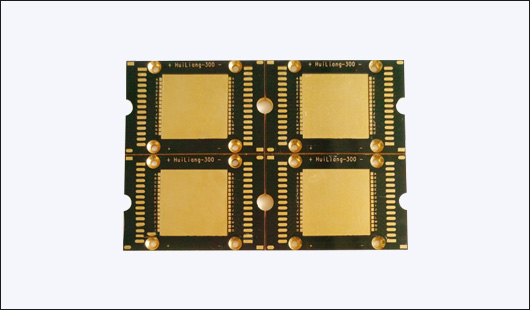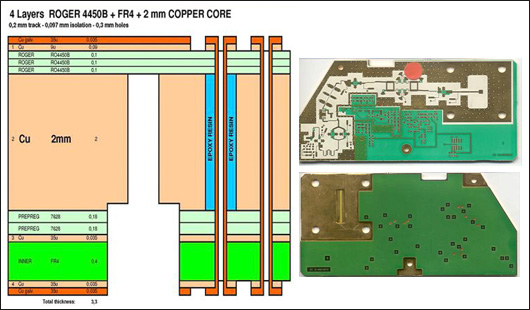A brief introduction of the metal core PCBs
Metal core PCBs also called MCPCBs, whose substrate layer is a metal base. The most common metals of MCPCBs used are aluminum, copper, and steel alloy. Aluminum-based PCBs are the most cost-effective; they exist good heat conductivity and thermal dissipation ability at low prices. Copper-based PCBs perform better than aluminum, but the price is higher. Steel-based PCBs are harder than the first two materials, while with a lower heat conductivity. Metal PCBs are known as their excellent thermal dissipation.

Along with the improvement of electronics’ specifications, the circuits have been developed towards miniaturization, lightweight, multi-function, and high performance. Therefore, thermal issues become the vital problems to affect the stability and reliability of the electronic products. Metal core PCBs are effective solutions for thermal problems in high-density circuits when customers do the PCB assembly prototyping and mass productions.
The benefits of the metal core PCBs
Excellent thermal dissipation
Thermal conductivity refers to the thermal performance parameters of a material. The thermal conductivity of Metal core PCBs like aluminum PCBs exhibits higher than other PCBs that use FR4 and CEM3 as the substrates. High thermal conductivity makes metal core PCBs have an excellent heat dissipation ability. The heat produced by ICs and components will be removed quickly, which helps to reduce the heat damage of the components and prolong the service life of the products, as well as improve the performance.

Good dimensional stability
Aluminum PCBs and copper PCBs have high CTE (the coefficient of thermal expansion). CTE refers to describe the expansion or contraction of material on heating. High CTE means the PCBs have a good thermal expansibility, and the board size will be little changed under the high temperature when compared to the normal FR4.

Less distortion
Good heat dissipation of metal core PCBs makes them less prone to high temperature, which causes less distortion during signal transportation.
The advantages mentioned above make metal core PCBs ideal solutions in many applications, such as power converters, lightings, photovoltaic, backlight applications, automotive LED applications, home appliances, and so on. Aluminum-based PCB is the most common type of metal core PCBs for its cost advantage. Especially in solid-state lighting, aluminum PCBs helps achieve higher lighting levels with less quantity of LED.
The copper foil thickness of MCPCB can be 1oz to 10oz, and the metal core thickness of the boards usually is 30mil to 125mil. PCBGOGO offers all the types of metal core PCBs, and just contact us if you need thicker or thinner substrates. PCBGOGO will always keep our capabilities and equipment standards with the pace of advanced levels to provide customers with the best services of PCB prototype, PCB fabrication, component sourcing.


